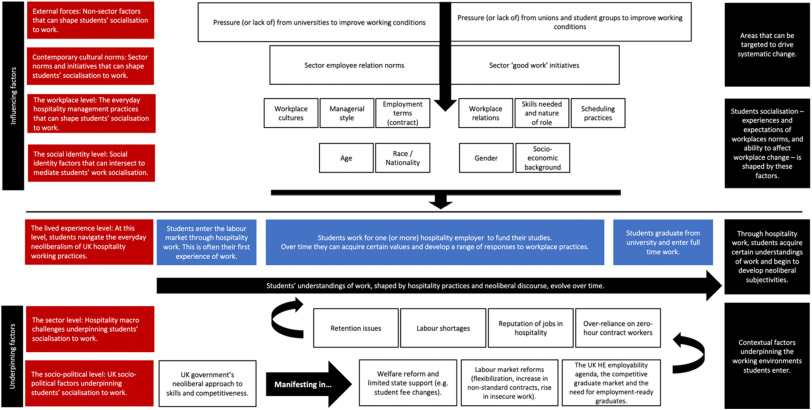By Sanjay Roy
The radical shift in labour relations from regimes of standard employment to fragmented and flexibilised labour force under neoliberalism is signified by a radical shift of responsibilities of their production of labour force from the capitalist employer to the State through the denial of indirect wage payments to workers. One of the major achievements of labour movement in the past was the recognition of elements as constituents of wage and benefits that ensured the reproduction of labour force in its totality. The underlying spirit was wages should not only cover the immediate needs of the worker but also should at the minimum be enough to maintain the intergenerational supply of a healthy workforce and the labour force not currently absorbed at work. This was required by capitalism to ensure the supply of workers in future.
In other words, wage determination should include apart from the necessities of direct workers, expenses to sustain other non-working family members, unemployed, including children and old parents. At a societal level this means the wages and salaries of active workers should be enough to take care of the unemployed, children, diseased and elderly members of the society. Under neoliberalism this accepted rationale for wage determination is turned upside down and the idea of permanent employment is being replaced by the notion of flexibilised work regime. Besides few core workers there would be a vast periphery of unprotected or even unrecognized workers contributing paid or unpaid work to the process of accumulation.
The wage determination is reformed in a way that payments to workers should at least cover the immediate necessities of the labour for a short period of time. Calculation of wages, in this case, neither factor in the long-term sustenance of the employed worker nor the maintenance of their family members. The workers are in a continuous state of flux, they move from one place to another, they work with different employers and also with the same employer but with intermittent contracts. In some cases, the contract between the employer and the employee are not only temporary but instantaneous. To many, as in the case of platform work, the worker is employed through a network on a piece rate basis and the employer might be a multinational corporation operating through some opaque technological Economic Policy and Labour algorithm which is completely inaccessible to the worker.
The radical shift towards the new regime of contractualisation and casualisation of workforce operationalised through domestic and global value chains not only increases the control of capital over the labour process but also drastically reduces capital’s cost of sustaining an overinflated reserve army of labour. The payment to the worker in the point of production completely denies the claims of indirect wages. Such payments in addition to covering immediate requirements of the working population could have actually helped in reproducing the inter-generational stream of labour and also maintaining the reserve army of labour.
True, that every capitalist crisis not only alters the composition of fixed capital but also redistributes the existing reserve army of labour by sectors, regions and occupations. But there is also a continuous process of replacing active workers by machines embedded in new technology which also recreates the reserve army of labour. This recreation of structural unemployment is important in capitalism to contain wages in periods of high growth because as the labour market approaches full employment the bargaining power of workers increases which tend to reduce capitalists’ profits. The question now is the cost of maintaining the reserve army of labour. More importantly with rising capital intensity, increasingly labour being replaced by machines, the number of labour required for production declines. This does not however mean that capitalism would be moving towards a state of zero use of labour, a chimera that capitalists would very much like to realise but that is actually a state of extinction of capitalism altogether because all source of surplus value is living labour and without that capitalism cannot exist.
The reserve army of labour was earlier maintained by the wages and security benefits paid to existing workforce. With contractualisation and flexibilisation of labour process and rising outsourcing and offshoring, the employers have been able to deny the responsibility of bearing the cost of subsistence of the unemployed, old and children. But because capitalist development is always uneven the pace of technological development and hence the pace of labour substitution in different sectors is not uniform and the dynamics of the expansion and contraction of the aggregate reserve army of labour varies with the relative labour requirement of sectors and related distribution.
Now the cost of reproducing the potential labour force is being shifted to the workers. There might be some transfer of accumulated surplus to people mediated by the State through various micro-welfare schemes but the decline of the labour’s share in the aggregate pie across countries show that the reserve army of labour expands with a reduced share of wages and salaries. Also, government revenue includes indirect taxes which is a deduction from the consumption fund of the working people.
The contradictory processes of capitalist accumulation accelerated through technological development gives rise to a contradictory division between the active and reserve labour force. It is a dual process which on the one hand makes a huge labour force redundant with increased use of machines and platforms and on the other hand for the existing workforce both hours of work and intensity increases. So, it is a bipolar outcome: vast mass of jobless and those who work have to produce more both physically and intellectually. The simple reason being, in capitalism, work or employment is meaningful only when it produces surplus for the property owners. A more rational and humane society could have resolved the impact of new technology in a radically different way.
Machines allow humans to produce more with the same inputs, if that is the case, logically, use of technology should generally reduce direct labour time. In other words, the same GDP can be produced with less direct labour time or all should actually work less while all would be employed at the same time. If the time necessary to produce our needs declines due to use of technology, human beings would be spending more time according to their choice and hence would be more productive. But this does not happen in capitalism as all the means of production are owned by the few capitalists who use technology to reduce the value of labour in order to generate higher amounts of surplus.
Technology instead of making vast number of labour redundant, in a different social setting, could have employed them for lesser hours of work and enhanced social disposable time which could have generated much more output for the society as a whole. In capitalism, on the contrary, use of technology and fragmentation of work process would reduce the value of labour power, will increase the number of jobless people, will shift the burden of maintaining the augmented reserve army of labour to the workers and finally intensify the rate of exploitation for the employed workforce. But this also creates the objective condition necessary to bringing together various segments of the working population: worker, unpaid workers and the redundant population in becoming a class against capitalist exploitation. (IPA Service)

 Author Pankaj Mishra Wins Coveted $75K Weston International Award
Author Pankaj Mishra Wins Coveted $75K Weston International Award 